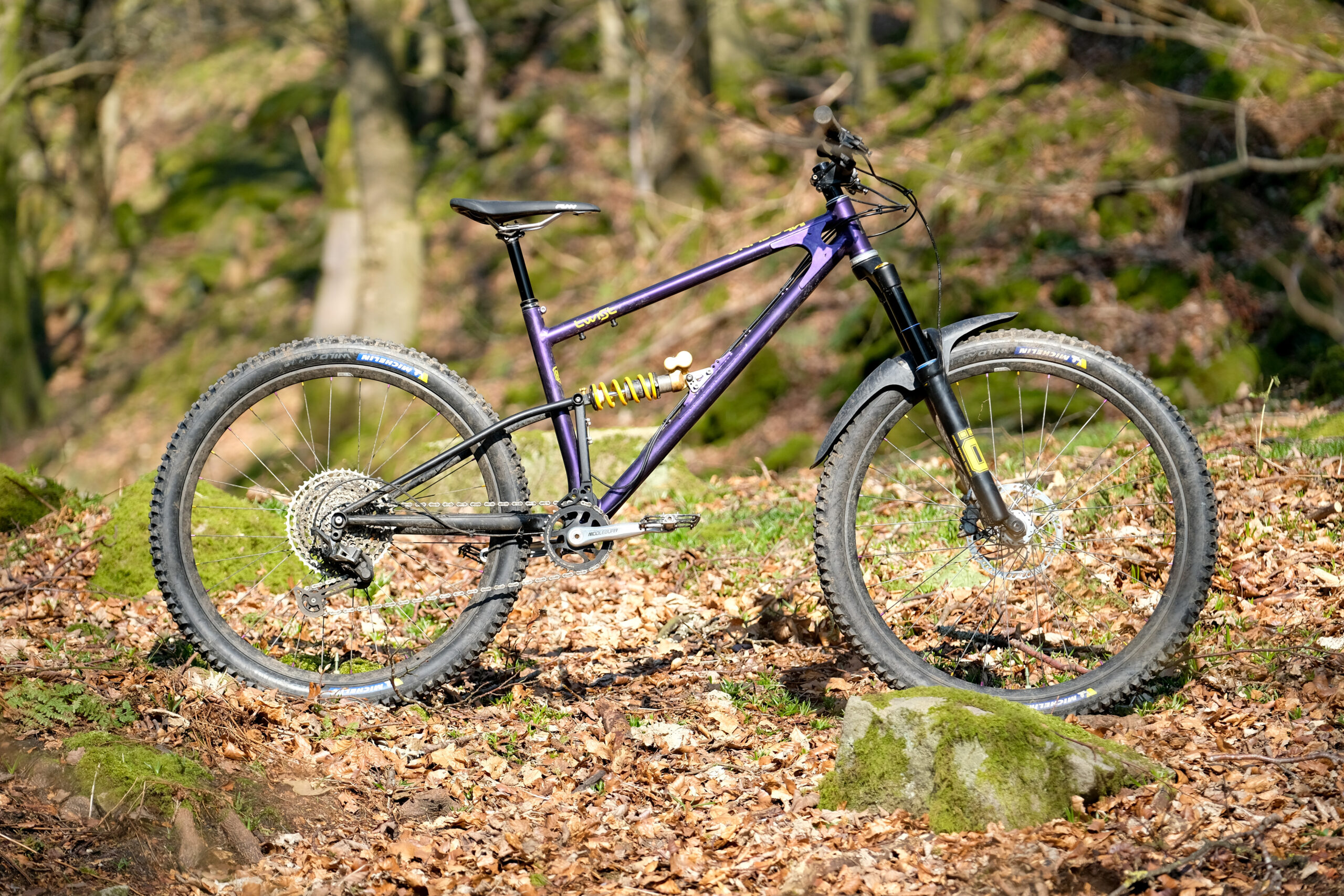Much like GeoMetron is Chris Porter, Starling Cycles is Joe McEwan. Joe used to work as an aerospace engineer and build bike frames in his shed as a sideline. Then came the oft-referenced review by Steve Jones in Dirt magazine. The basic gist of Jones’ review was ‘Mind. Blown.’
- Price: £4,971 (not including drivetrain; 2022 init), frame only £1,880
- From: starlingcycles.com
- Tested by: Benji
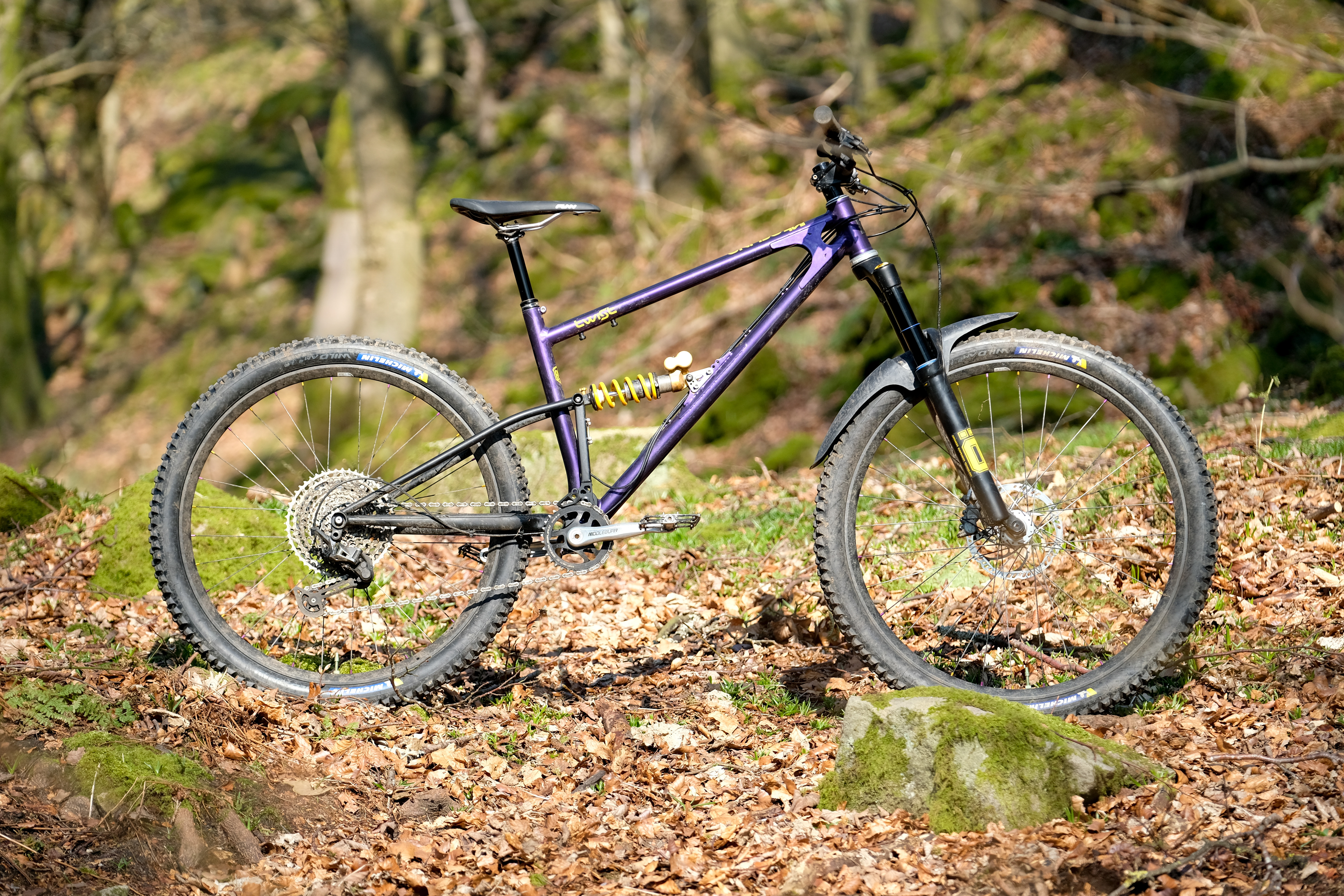
Interest in Joe’s bikes took off and he’s since gone full time as Starling Cycles. Who doesn’t love that back story? Love has a lot to do with Starling bikes. They are bikes bought with heart first. Starling Cycles is no longer just a one-man outfit. It’s grown into an impressive enterprise and industry shaker-upperer that employs a number of people.
I really should declare my bias here. I am on record as saying that the Starling Murmur is the best looking bike of all time. I have always wanted one from the time I saw one (in Dirt magazine, funnily enough).
The Bike
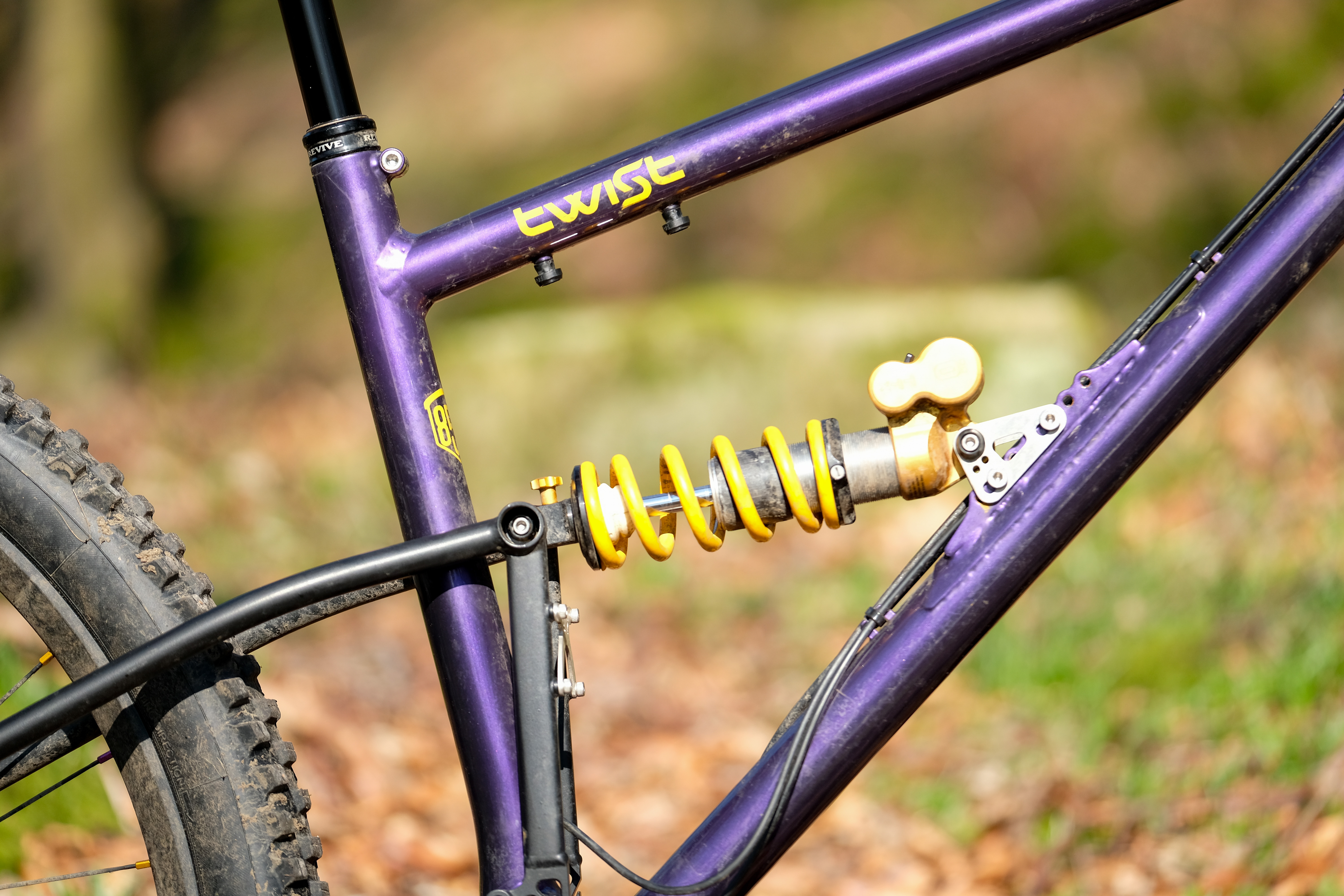
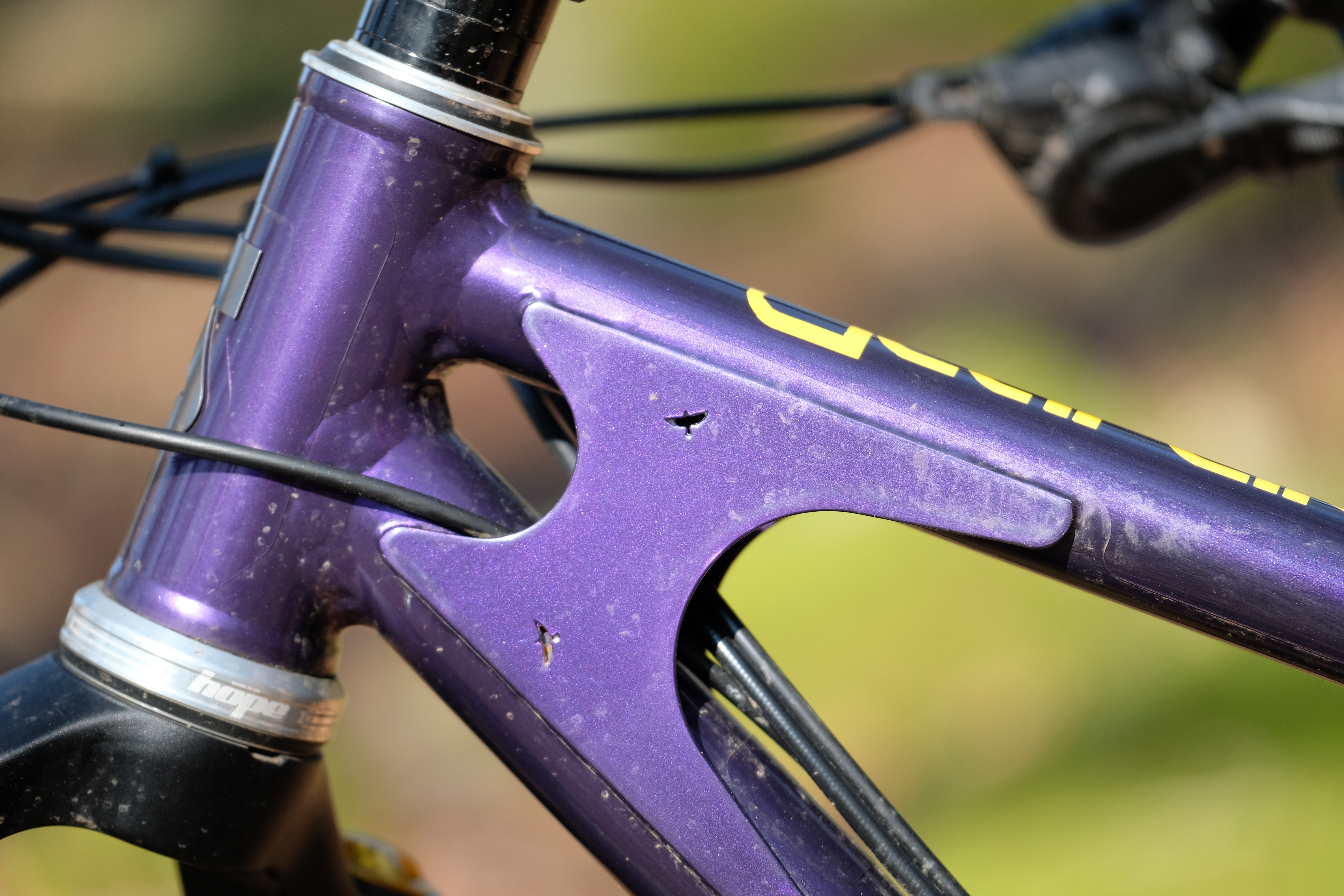
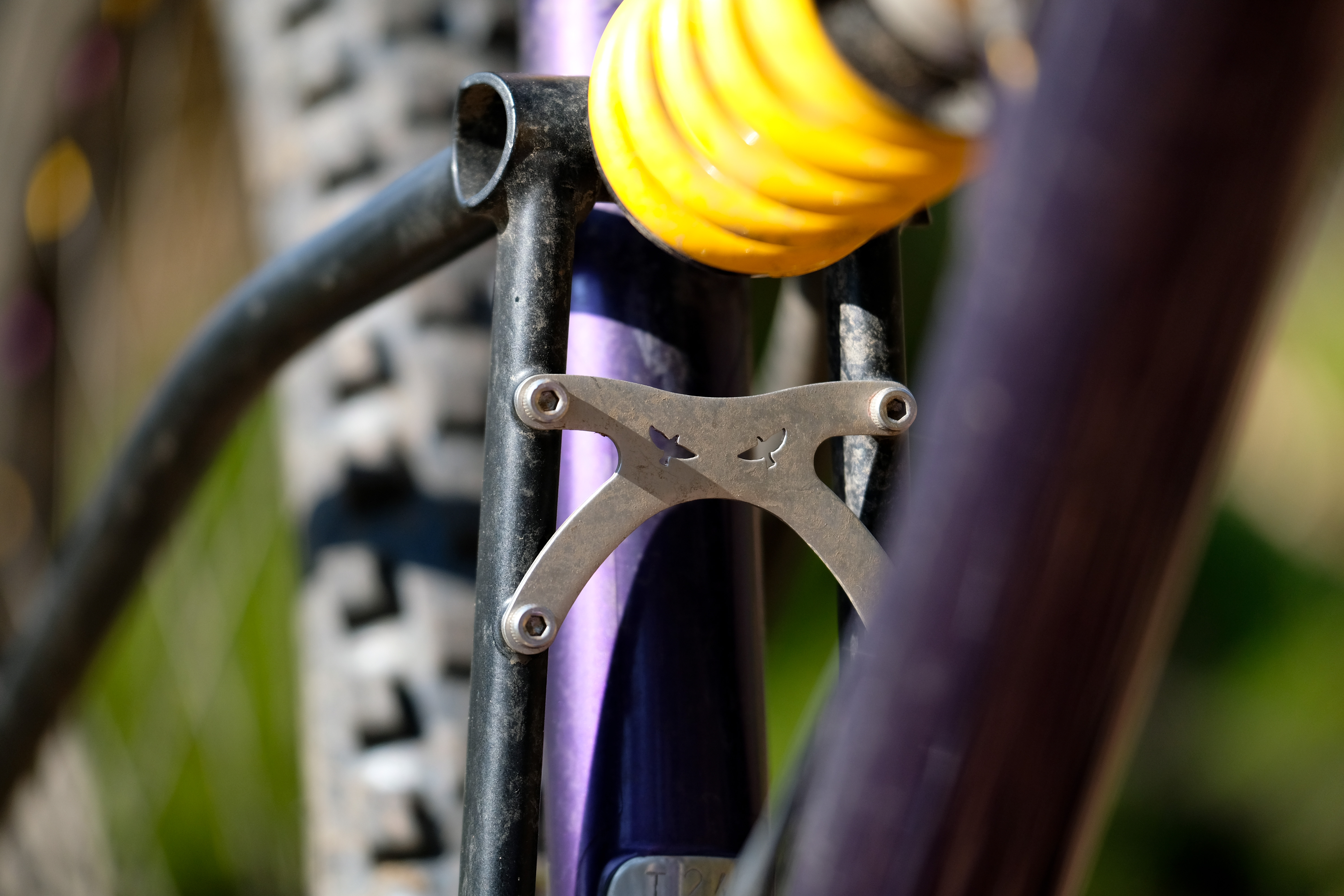
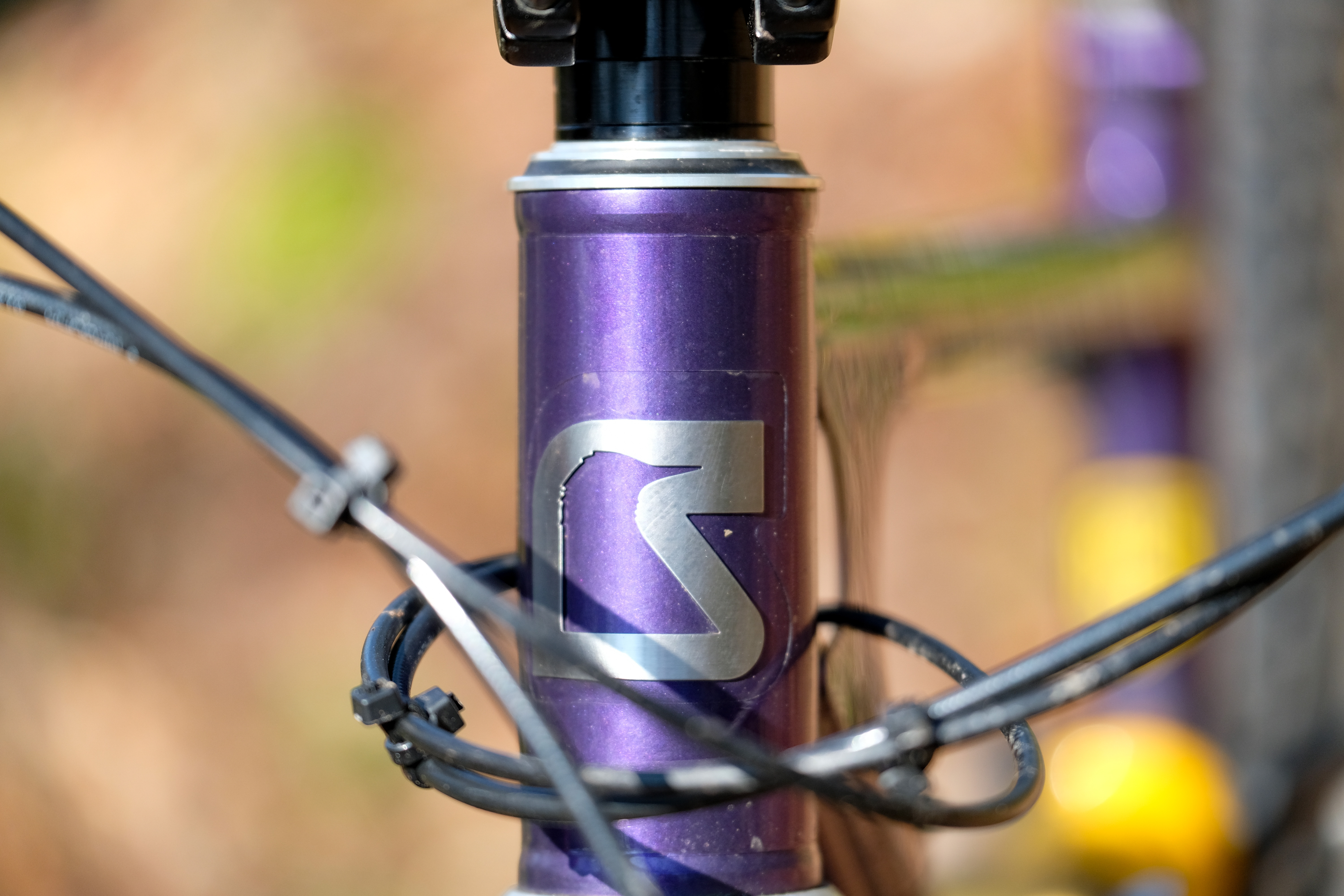
The Starling Twist may not steal my heart’s eyes (can hearts have eyes?) quite as much as the aesthetically perfect Starling Murmur, but it’s still a stunningly gorgeous bike. Though a few folk might recoil at the skinny pipes on Starlings, they are wrong.
The Twist here must be the bike that’s had the most people (complete strangers as well as riding friends) comment on its prettiness. ‘What is THAT? That is well nice. How much is it?’
This Twist is actually a Twist Trail with 140mm travel at the back (the Öhlins fork is 150mm travel). Starling also does a 160mm travel Twist called the Twist Enduro. As with its iconic Murmur, the Twist uses a single pivot design. Unlike both the GeoMetron G1 and the Santa Cruz Bronson elsewhere in this test, the Twist has a pretty much linear progression ratio. It’s not softer at the start and ramps up to a bottom-out resisting ramp-up. With such a linear mechanical action, how the rear shock deals with things is crucial. It’s down to the shock’s damping circuitry to cope. Thankfully this Twist is paired with an excellent shock in the form of the Öhlins TTX Coil. Although you’d possibly think that an air shock might be a wise pairing with the linearity of a single pivot (and that might well be the case) there’s no denying that the silky muscle feel of the Öhlins is decidedly seductive. Anyway. More about that below.
The frame is made from steel. The front triangle is built in the UK from Reynolds 853. The swingarm is made in Taiwan, by ORA, from heat-treated chromoly. The whole frame is simultaneously no-nonsense yet overtly style conscious. It doesn’t need to have those bird cut-outs in the gussets and cross-brace. And that cross-brace between the uprights of the swingarms doesn’t have to be shaped like that does it? But it is. Because why not? Tiny bits of joy. Refreshingly cute (camp even) and old-fashioned in the all too aggressive and sharp-edged world of contemporary mountain bike design.
The head badge and the Starling decal are both really cool too. Yes, I am principally banging on and on about how the bike looks. I can’t help it.
It reminds me of when you get a camera that is just pleasurable to gaze upon. Like the Fuji X series of mirrorless cameras. They look fabulous. You want to use one, just to use one. The urge of it all. And then you do get to use and… lo and behold! It takes great pictures as well as looking stylish AF. Win, win, WIN.
So does the Starling Twist Trail take good pictures? I’ll get on to that in a moment. (Another spoiler alert: yes it does.)
In terms of geometry, the Twist has some surprises. The head angle is the main thing that may cause eyebrows to raise. At a stated 65.4° it is not in Camp Slack. These days it could almost be transferred into Team Steep. The rest of the geometry also keeps things compact as opposed to sprawling. The head tube on my size Large is a relatively short 110mm. The chain stays are a crisp 435mm length. The seat tube is low at 440mm. The 485mm reach is pretty standard these days. It’s only the decently steep 77.4° seat angle that jumps out as being progressive.
The Ride
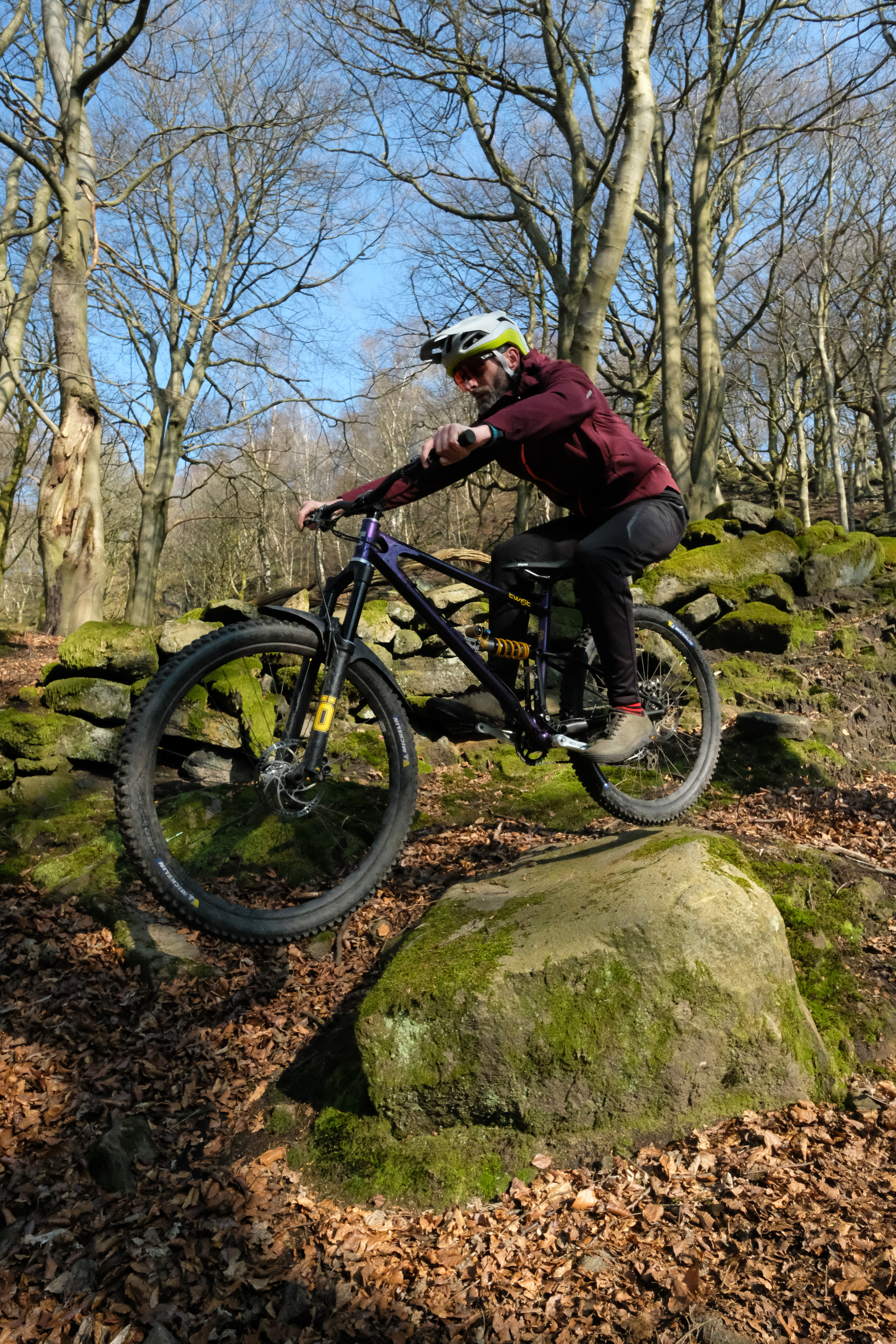
Thankfully you can’t judge a bike by its geometry chart alone. Nor can you criticise a circle for not being a square. You’ve got to ride things with an open mind. Suck it and see.
The first few rides on the Twist Trail were perplexing. To me at least. I’m just too used to bikes with 150mm travel forks on them being a bit longer in reach and, especially, a bit slacker in head angle. A riding friend of mine not so entrenched in the ways of slackness didn’t seem to have much of an issue. They were too busy laughing their heads off at how much outrageous fun they were having.
Eventually I got it. The Twist Trail is a low-rider. It’s all about low centre of gravity. The Twist is also seemingly a bit of reversal compared to how other brands have designed their mullet bikes. The Twist doesn’t ride like a 29er that’s had its back end compromised for some theoretical overstated/illusory ‘playfulness’. The Twist actually rides a heck of a lot like a full 27.5in bike. A 27.5in bike that’s suddenly got a whole lot more grip and confidence up front.
Where the geometry rewards – nay demands – being ridden in the best elbows-out, knees-down ragging as is feasible, it’s the frame handling that lets you get away with things. There’s a larger margin for error. There’s less deflection. There’s less tyre washout. There’s more feel.
The rear suspension is a funny one. It doesn’t handle absolutely everything absolutely brilliantly, but for the most part it’s excellent. It’s pitter patter supple, has great feel – and yes, even support – in the midstroke (compared to an air shock). On really big hits and drops you noticeably use all of the travel pretty readily. It’s not a bottomless feeling bike. Having said that, the modest ol’ rubber bump stop on the coil shocks does actually do a decent job of muting harsh bottom out; it’s like a short and sharp bit of ramp-up just before the very, very end of the travel.
Although the last bit of travel can feel a bit too easy to achieve compared to other modern bikes, this in no way means that the rest of suspension stroke is soft or wallowy: it isn’t remotely the case. Like a lot of single pivots, the Twist pedals incredibly stably. No doubt the Öhlins shock doesn’t hurt, but that isn’t the main cause of this efficiency – it’s inherent in the single pivot layout.
The middle part of the suspension is arguably where the best aspect of coil shocks is found. Compared to air shocks – and compared to some multi-pivot rear suspension designs – the midstroke on this bike feels simultaneously super supportive and free-moving. The midstroke of coil sprung single pivots can be as supple as the sag point. Lack of seal drag is a factor here, as is the lack of any odd hammocks in the leverage curve.
The bottom line is that I’d be more than happy to sacrifice some bottom-out resistance in exchange for the way the shock feels for the rest of the time. You can also try things like running a firmer spring or even installing a progressively-wound spring (if you can bear to live without THAT yellow spring).
Niggles? I didn’t really get along with the handlebars. There’s low and then there’s too low. I had better handling results after switching to a higher rise bar (At 6ft/185cm I am on the limit of frame size though). And I’m really glad I bothered to remove the CushCore inserts and the dead, draggy Michelin tyres. Once shorn of these items the bike was instantly given a turbo boost.
Overall
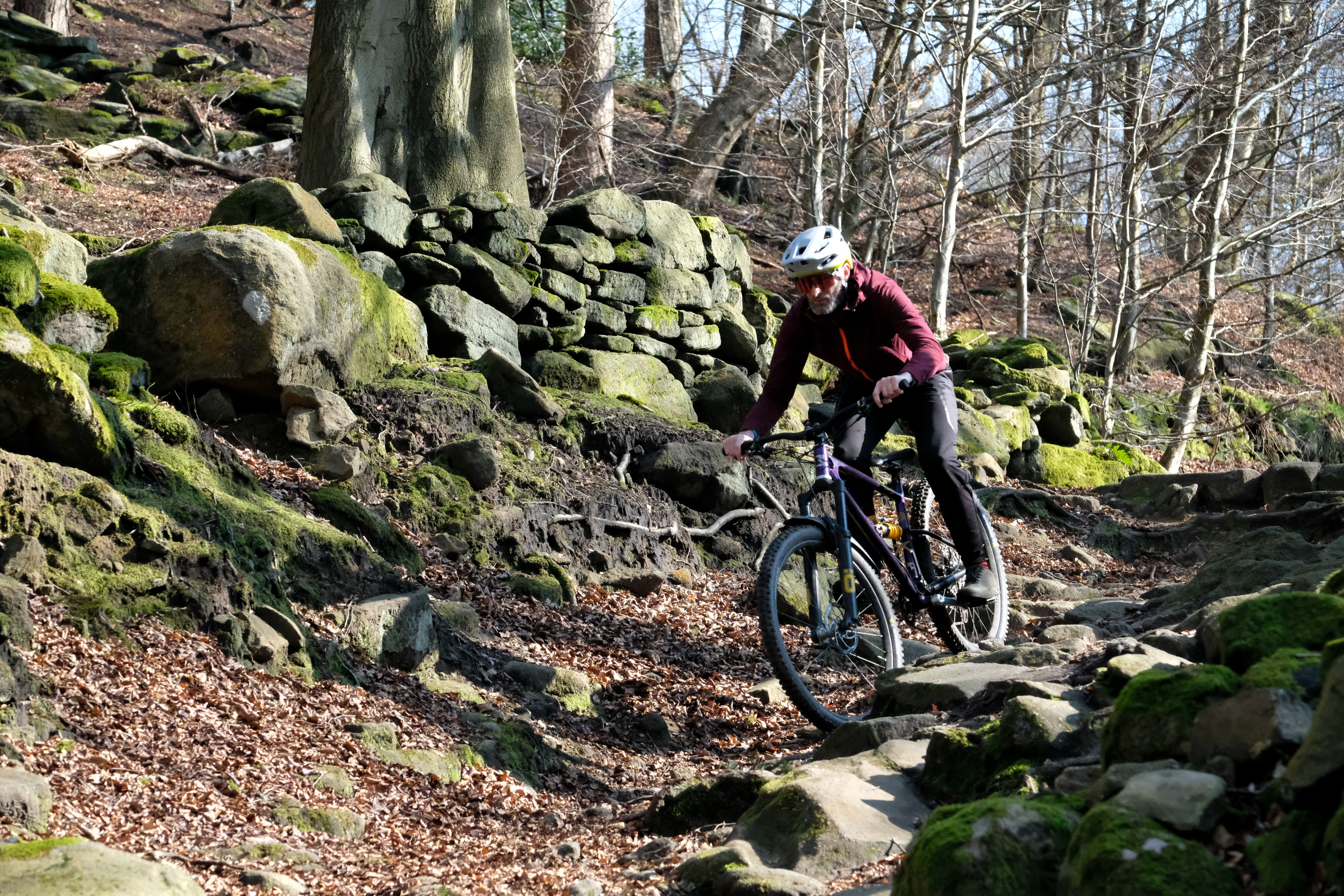
Starlings are bikes bought with heart first. Does the head end up regretting the purchase? I’m sure it could do if you were to choose the wrong one. With the Twist, Starling has totally nailed the remit of the mullet in my opinion. It’s a nimble playbike that offers a bit more help where you need it, namely, up front.
Despite having the word in its name, the Twist Trail is not really a trail bike. It’s far too Scrappy Doo for that. Wanna trail bike? Get the Murmur. If you want a bike for hammering the heck out of a couple of square kilometres of woodland, the Twist is the one. With the added benefit of being a blast on the occasional obligatory daytrip to some McTrailCentre or other, where it is also a freaking riot.
Starling Trail Twist Specification
- Frame // Steel, 140mm
- Shock // Öhlins TTX Coil, 210x55mm
- Fork // Öhlins RFX 36 m.2 Air, 150mm, 44mm offset
- Wheels // Hope hubs, DT Swiss XM421 rims
- Front Tyre // Michelin Wild AM 2 29×2.4
- Rear Tyre // Michelin Wild AM 2 27.5×2.4
- Cranks // Middleburn RS8
- Drivetrain // Shimano SLX
- Brakes // Magura MT7, 180/180mm rotors
- Stem // Funn
- Handlebars // Funn
- Grips // Funn lock-on
- Seatpost // BikeYoke Divine 160mm dropper
- Saddle // Funn
- BB // Shimano
- Size Tested // Large
- Sizes Available // M, L, XL
- Weight // 14.75kg
Geometry For Our Size L Test Bike
- Head Angle // 65.4°
- Seat Angle // 77.4°
- Seat Tube Length // 440mm
- Head Tube Length // 110mm
- Chainstay // 435mm
- Wheelbase // 1,260mm
- Effective Top Tube // 628mm
- BB Height // 336mm
- Reach // 485mm
